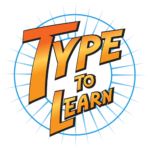For today’s students, typing has become a fundamental skill, especially as technology continues to play a central role in how they take exams and complete assignments. For K-12 students, learning to type early through a program like TYPE TO LEARN can provide a significant advantage, not only in day-to-day learning but also in their performance on standardized tests and exams. Mastering typing offers numerous benefits that can help students become more efficient, organized, and confident when it comes to test-taking.
One of the most significant advantages of learning to type early is the ability to build typing speed and accuracy over time. Typing is a skill that improves with practice, and starting early gives students more time to refine their technique. When it comes to exams, especially standardized tests that require written responses, students who can type quickly are able to answer more questions within the allotted time. This speed allows them to fully articulate their thoughts, make revisions, and avoid feeling rushed—ultimately leading to more thoughtful answers.
Typing also reduces the risk of physical strain or discomfort during long exams. Many students who are not accustomed to typing may struggle with hand cramps or fatigue, which can disrupt their focus and performance. However, students who practice typing early on develop muscle memory and better ergonomics, making it easier for them to type for extended periods without experiencing pain or discomfort. This helps them maintain a consistent pace and focus on the content of the exam, not the physical challenge of typing.
In addition to speed and comfort, early typing practice helps students develop better organizational skills. How? Well, typing encourages a more structured approach to writing, allowing students to easily edit, rearrange, and clarify their thoughts. This becomes especially important during timed exams when students are asked to write essays or short answers; students can focus more on the quality of their responses rather than worrying about legibility or writing pace.
Finally, early exposure to typing boosts overall academic confidence. Students who are comfortable with typing feel more confident in completing computer-based assignments, and this translates into better performance on exams that include written components. As digital assessments become more prevalent, the ability to type proficiently offers students a competitive edge. By learning typing skills early in their academic careers, students set themselves up for greater success, not just in exams, but in all areas of their educational journey.
To sum it all up, typing is a valuable investment in a K-12 student’s education, and TYPE TO LEARN has more than 30 years of proven results! It enhances their ability to perform well on exams by improving typing speed, accuracy, and overall comfort. Practice also promotes organizational skills and boosts academic confidence, giving students the tools they need to excel in a technology-driven world.





